
Keeping homes and facilities cool without warming the world
Keeping homes and facilities cool without warming the world
Share
On January 11, Sydney had its muggiest day on record, with the hourly dew point reaching a record temperature of 25.9 degrees Celsius and humidity weighing in at 94 percent.
But the office workers at architecture practice Smart Design Studio, in the inner-southern Sydney suburb of Alexandria, did not experience a temperature higher than 26 degrees, and it wasn’t due to the relief of air conditioning.
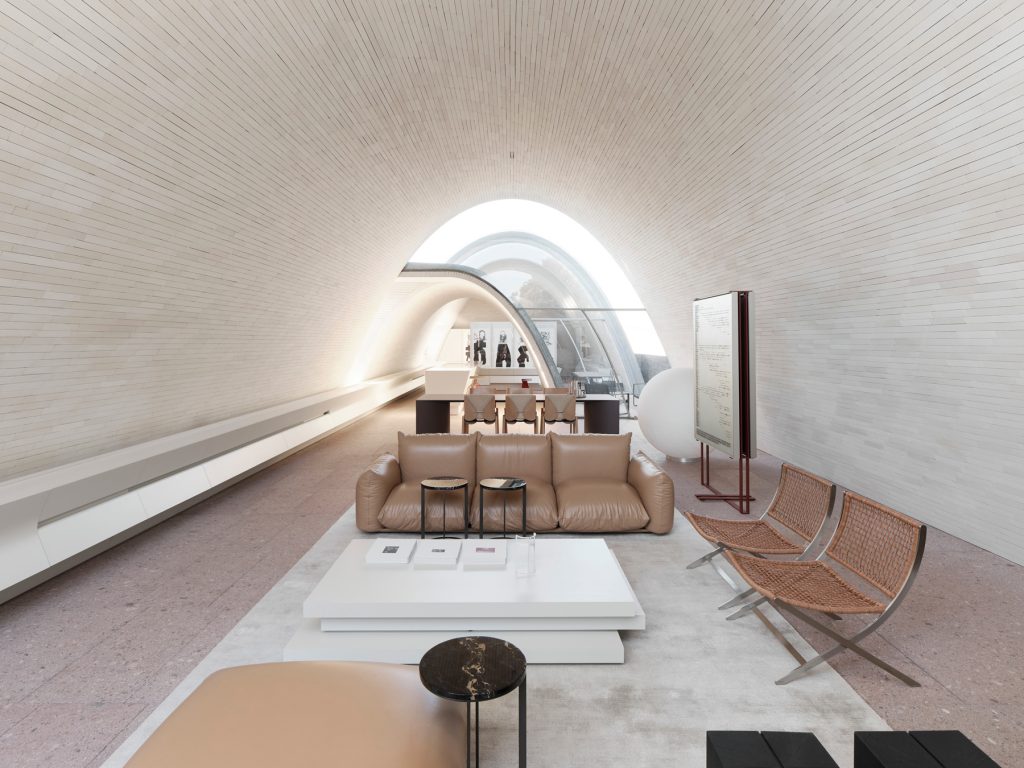
Smart Design Studio founder and creative director William Smart had heard about under-floor heating being used as an HVAC alternative in Europe.
When incentivised to reduce energy consumption and innovate a space in a climate prone to unshakeable humidity, he decided to design a new office space for his team in Alexandria that would operate without air conditioning. He enlisted the help of an underfloor cooling consultant.
“He initially said it wouldn’t work in Sydney, it’s just too humid,” recalls Smart. Melbourne’s dry climate may allow it, he was told, but Sydney’s humidity is just too much of a hurdle to overcome.
Informing an office in Sydney that summer will be without air conditioning could be fraught with peril. However, scepticism was not directed towards Smart’s desire to implement underfloor cooling.
“There was a resounding support for it and an understanding that on hot days, it would be warmer, and we would need to find ways to manage,” says Smart.
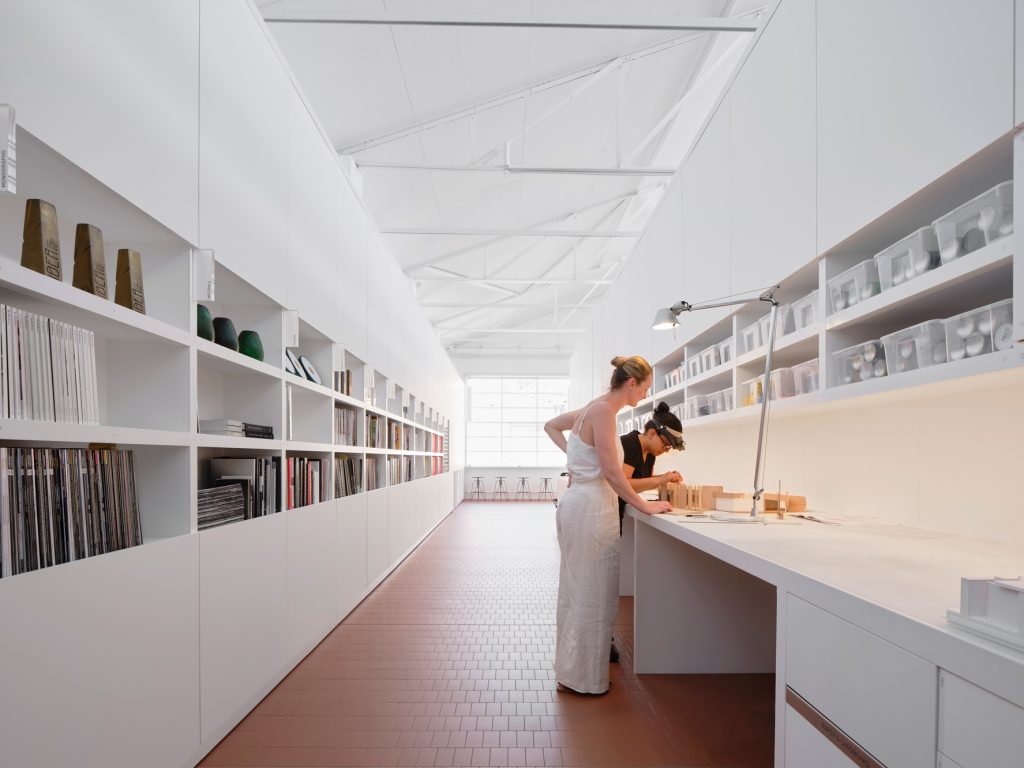
A calm, ‘whisper quiet’ and cool office
Two years on from the delivery of the office, Smart speaks of a serene and “whisper quiet” office, drenched in natural light and never hotter than 26 degrees, with “incredibly low” energy consumption to boot.
The team has learned tips and tricks to combat days of intense humidity – wearing lighter and cooler clothing in the office, staff cooling down their bare feet on the tiled floor, and having a large number of fans.
But what is underfloor heating and cooling? How can it function effectively in Australian households?
Smart Design Studio’s office in Alexandria is an 800 square-metre open-plan former warehouse building, boasting generous volumes of air, a sawtooth roof, delicate trusses, intact façades and seven-metre-high ceilings at some points.
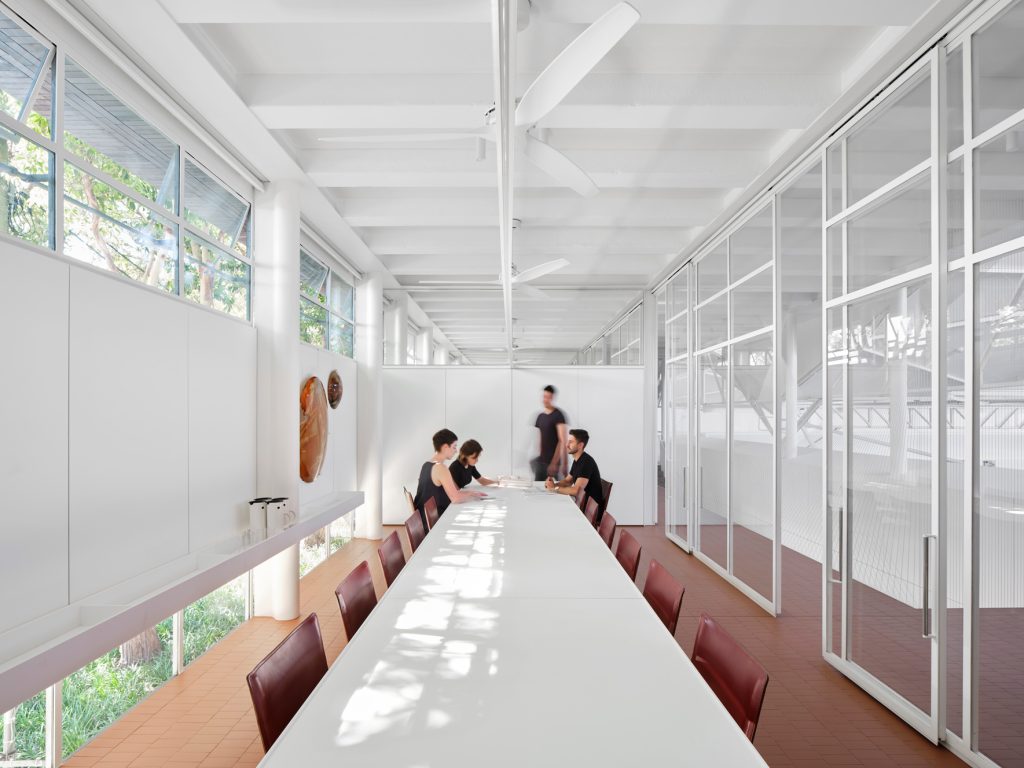
The climate control magic is noted in the floor – a concrete slab covered with tiles and hydronic pipes containing water that either heats the floor in winter or chills the floor in summer. On moderate days, Smart admits, it does not really function.
“80 percent of the time it’s not really functioning, and then 20 percent of the time it’s either heating or cooling the floor to different levels,” says Smart.
In addition to an underfloor cooling and heating system, Smart was eager to have a continuous stream of fresh air and natural light in the office to allow workers to feel comfortable and content, and subsequently increase productivity and overall office wellbeing.
Life-size and cost-effective esky
An in-built function to gauge the next day’s weather means the underfloor system knows to either cool or warm the office overnight in preparation. The blinds and windows are also operated by the same system.
“In summer, winter and the in-between months, the system goes through a night perch mode and opens all the high-level windows in the secure parts of the building from around 10pm until three or four in the morning,” says Smart.
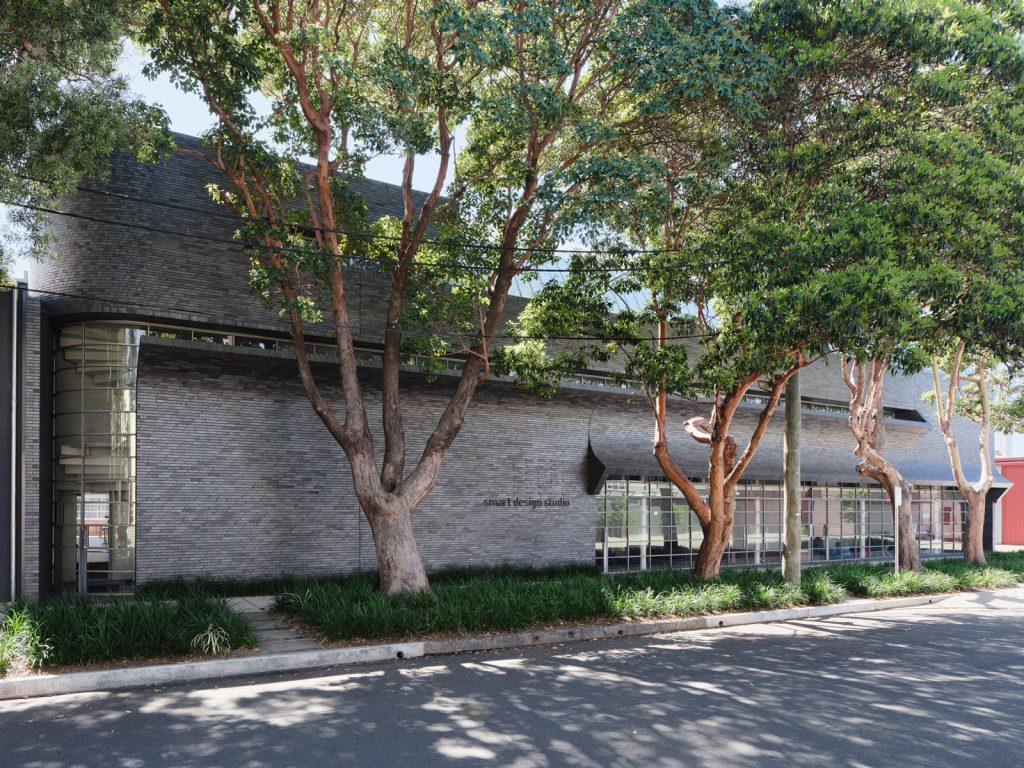
In the morning, the windows will either stay open or closed depending on the conditions of the day. Smart says the building functions in a manner similar to an esky.
“In winter you let the sun in by having the blinds up. In summer, you put the blinds down and keep the sun out. You don’t want the hot air to escape in winter, or the hot air to come into space in the summer,” says Smart.
Sporadic discomfort for long-term gain
The effectiveness of underfloor cooling and heating is also bolstered by solar panels, a light-coloured roof and cross ventilation.
Heat transfer expert Dr Tom Simko echoes Smart’s tip that bringing cold air into a house or facility overnight can be an effective way of chilling a space for the morning. The success of this method is enhanced when coupled with materials that have a high thermal mass, such as brick and concrete.
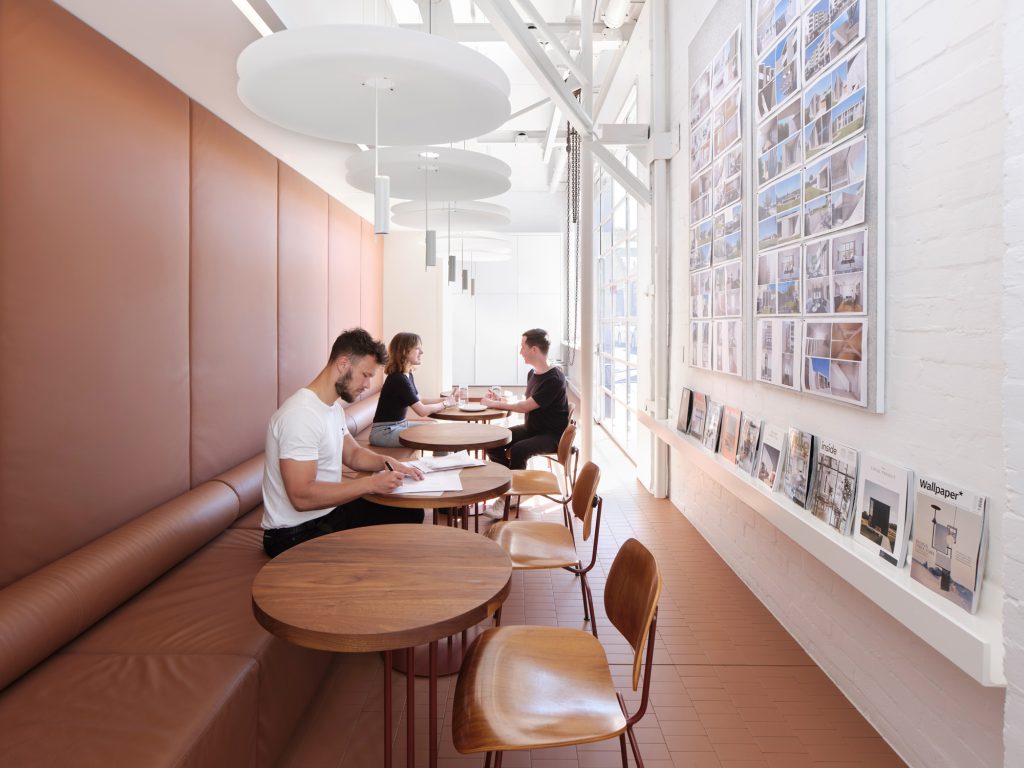
Office workers relish not breathing in filtered air through an air conditioning unit, and Smart rejoices in the minimal energy consumption. In peak loads, the consumption is very low, and in summer when the sun is shining in all its brilliance, there is a sufficient amount of energy gained from the solar panels to operate the underfloor cooling.
Smart says there are still bursts of mugginess in the office, however, over the course of the year it’s insignificant. Sporadic seasonal discomfort is worth the long-term gain of a pleasant office environment and low energy bills.
A small and damp sacrifice
On the aforementioned record dew point day in Sydney, everything that was cooler than 25.9 degrees would inevitably condensate, which meant the cool tiled floors at Smart Design Studio started to resemble a slip-and-slide, and fans were operating at the quickest speed to make the condensation evaporate.
This is a small but manageable limitation of the system, says Smart.
“On this day, our floors were getting wet, and you would take a bottle out of the fridge and it would get condensation on it,” says Smart. “We needed to keep the floor cool to cool the space, but mugginess means condensation, so that’s where the system slightly falls down.”
Avoid opening the oven door
Can underfloor cooling and heating be implemented in residential buildings? Smart Design Studio has designed houses with underfloor systems, but it depends on a few factors.
“I think the system works best when it is coupled with an underperforming air conditioning system, because what happens is that the system absorbs the base load,” says Smart.
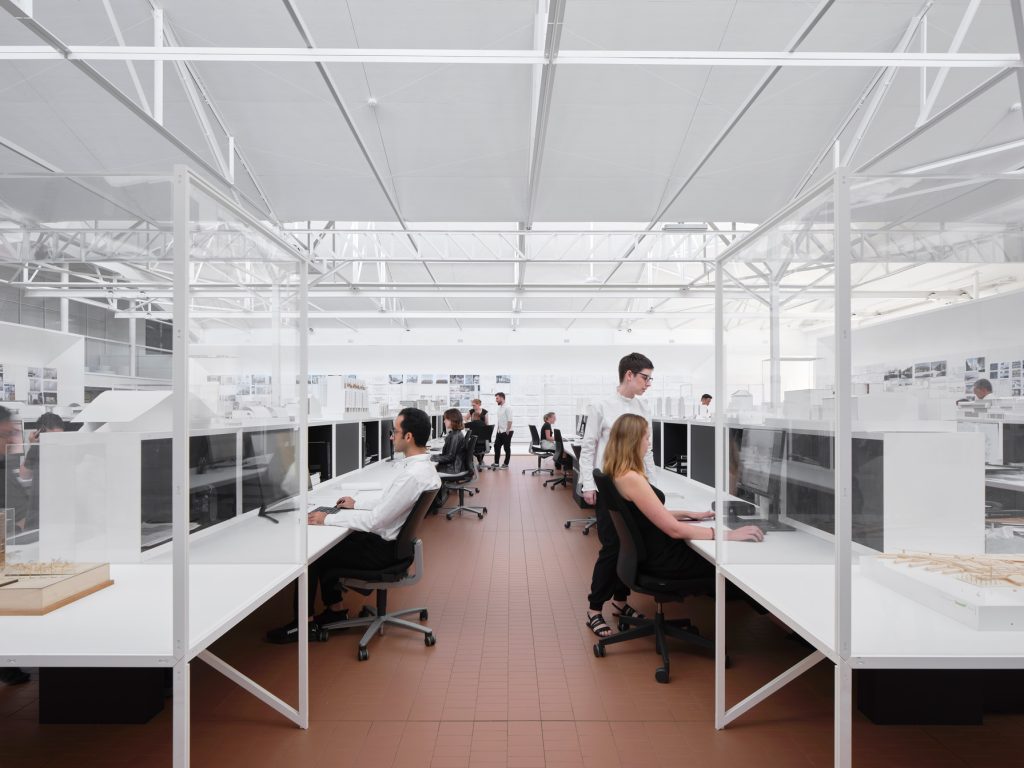
Underfloor cooling might reduce an indoor temperature of 35 degrees Celsius to 26 degrees Celsius, and then the air conditioning will decrease it more to 24 degrees Celsius.
Smart says people fall short when trying to cool down facilities or houses by relying on a method that feels the most natural, yet is an unsustainable band-aid solution.
“I think the biggest mistake is opening a house when it’s a hot day– it’s like opening an oven door, you’re letting the heat from the oven into the space,” says Smart. And while it’s momentarily satisfying to feel a slight cool breeze, it’s ineffective in dry heat climates.
“It’s better to just close the doors and have a fan running,” says Smart.
An investment rather than a cost
An additional misconception Smart addresses is that glass has the power to cool down a space, when in reality it’s actually a “poor insulator and a poor material for the internal environment,” according to Smart. A glass-heavy space translates to a loss of heat in winter and crippling heat in summer.
If opting for glass, double or triple-glazed windows are preferable, and bolstered in functionality by pairing them with ceiling insulation – noted in Smart Design Studios’ office, which has high volumes of insulation, a light-coloured roof and solar panels.
Underfloor cooling demonstrates how incorporating sustainable building practices into a build can be perceived as an investment rather than a cost. Smart Design Studio celebrates this tweaking of terminology and definitions, as attitudinal change is the key to making those resistant to ‘green builds’ jump on board.
“If you ask architects what their biggest challenge is, it will be trying to meet a client’s brief and expectations and manage that with the budget – and you don’t have to have double glazing or underfloor cooling, but it is undeniably better, and then it becomes a matter of value,” says Smart.
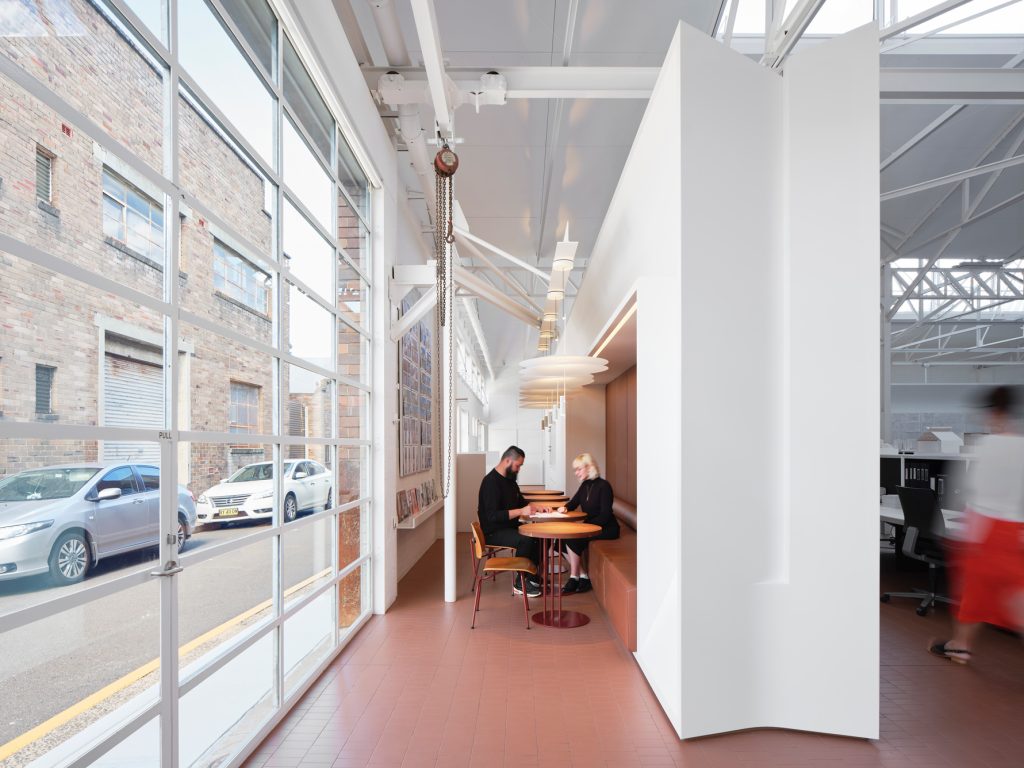
The power of windows
Underfloor cooling and double glazing are more expensive than installing air conditioning, as you have to lay pipes and sweep the floor, or front a hefty amount if selecting double-glazed windows, however, Smart says the payback is eternal.
“If you were to invest approximately $100,000 in moving to double-glazed windows, you’d be likely to save $10,000 a year in energy, so in terms of investment, that would pay back its own cost in 10 years,” says Smart.
Also, in a cooling-dominated environment such as Sydney, Simko recommends reducing solar gain through investing in insulation, double-glazed windows with low-emittance coatings and ensuring roofs and walls are coloured white or light red rather than black, which has been noted in a climate such as Sydney’s.
Insulation is often overlooked as an effective way to stall the rate of solar gain heat transfer into a building.
Thoughtful and purposeful passive cooling
If air conditioning is still a cherished and unmovable feature in your facility or home, Smart recommends trialling temperature fluctuation as an energy saver.
“You can relax some of the parameters of air conditioning to save on costs,” says Smart.
Smart also advises people to release heat from houses and facilities at night by keeping the windows open.
“If you can release hot air at night, that gives eight hours of cooling time, and thermal mass such as bricks or concrete also provide cooling and reduce running costs,” says Smart.
Opening windows does let debris such as leaves and insects into the space, so facilities and houses need to be armed and prepared and embrace the challenges that come from allowing windows to stay open.
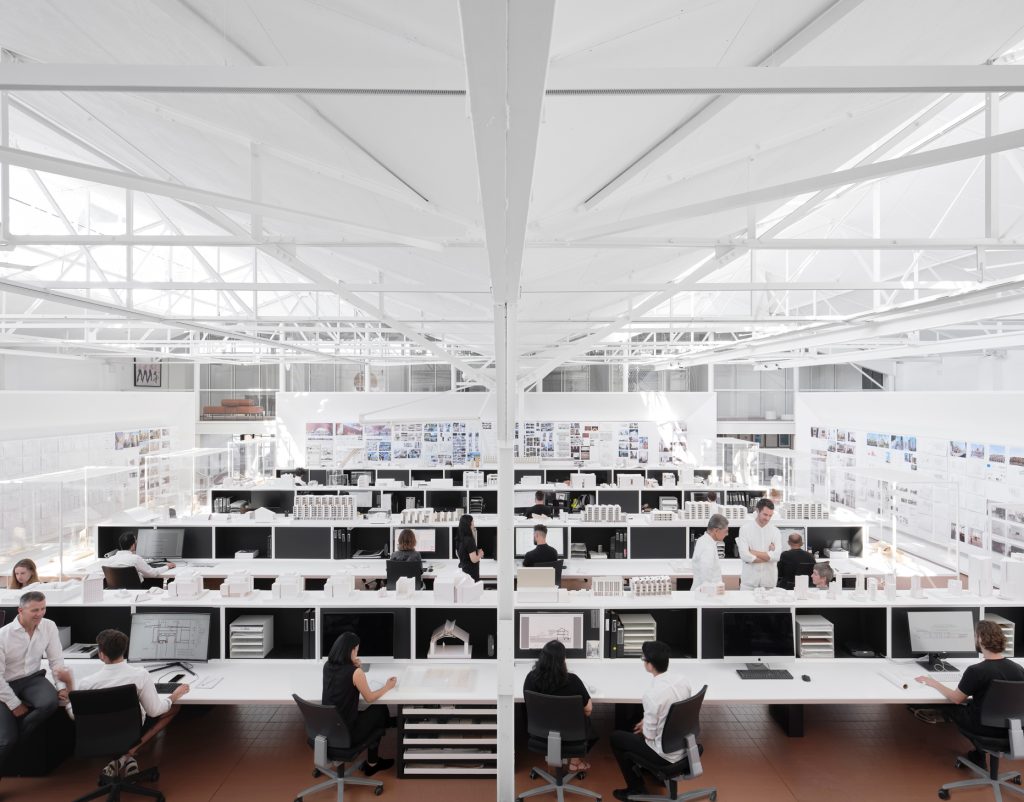
Simko corroborates Smart in saying that allowing air to come into a space overnight is not always possible for larger facilities, as windows can be inaccessible or not fitted with protection against insects and debris such as leaves.
Larger facilities are also notoriously internal-heat-gain intensive – people, computers, staff, kitchens and lights inevitably heat up a space. Simko says office spaces and facilities would be wise to turn off equipment at night.
“It means you have to be thoughtful about what will work for the space,” says Smart.
An intimate understanding of the space, surrounding environment and climate is a reliable weapon to take into battle, and will allow people to anticipate what is required if opting for passive cooling methods.
Photography supplied by Smart Design Studio.
You Might also Like
























